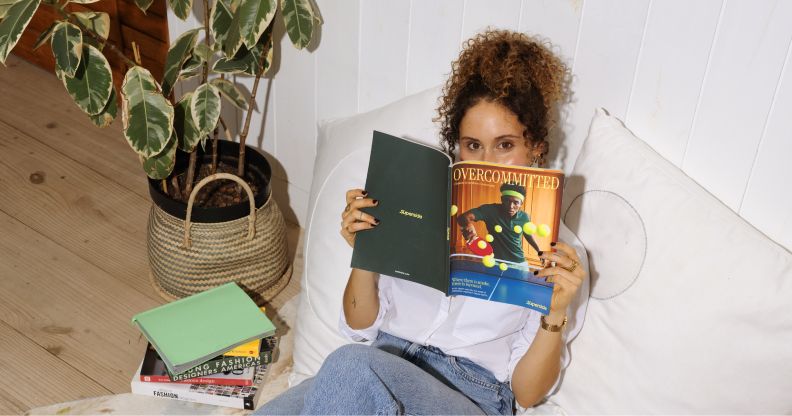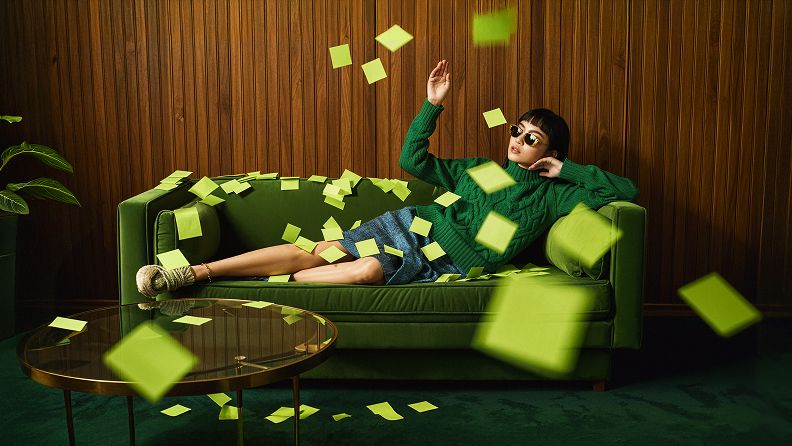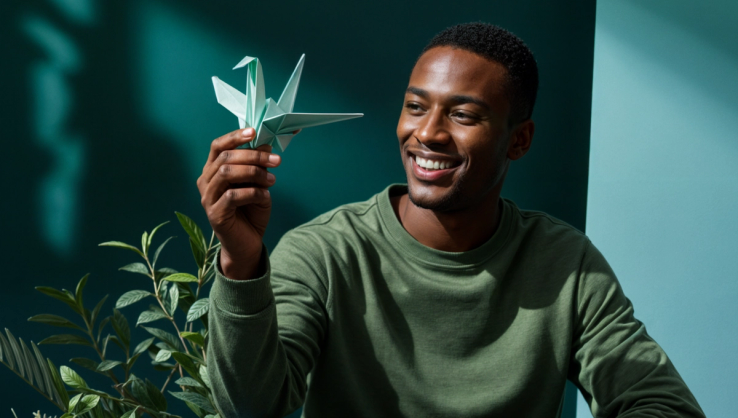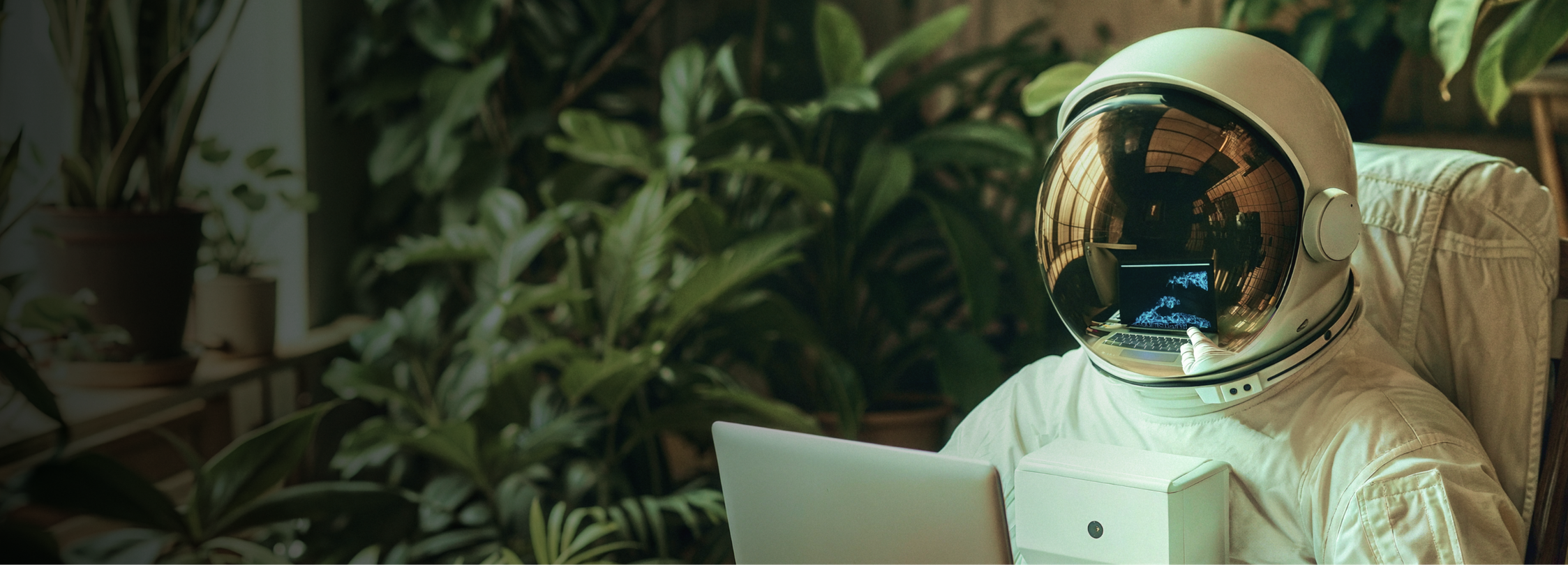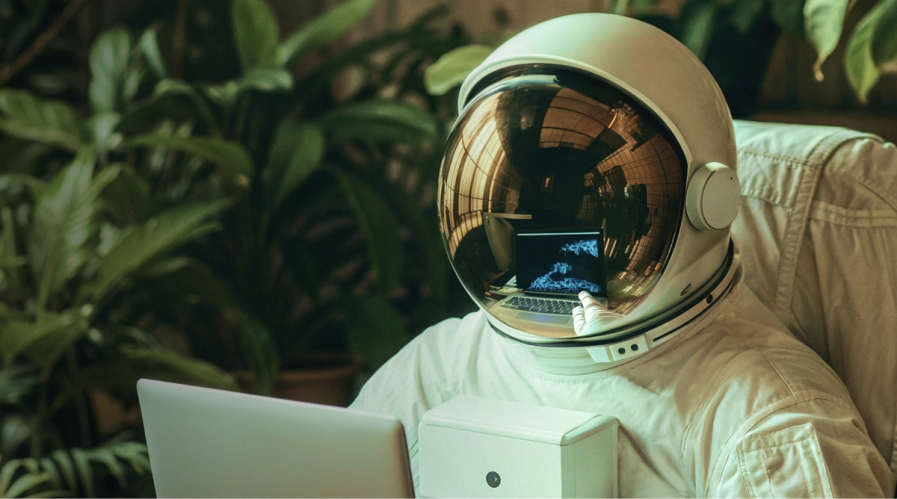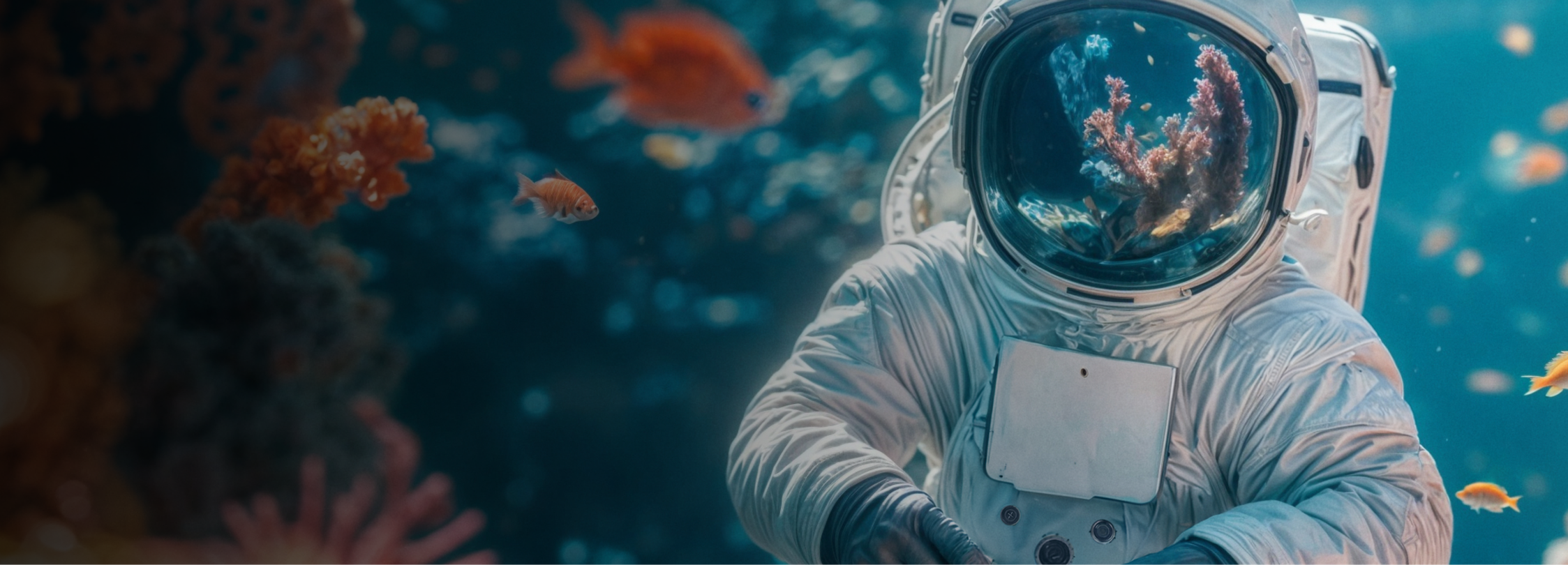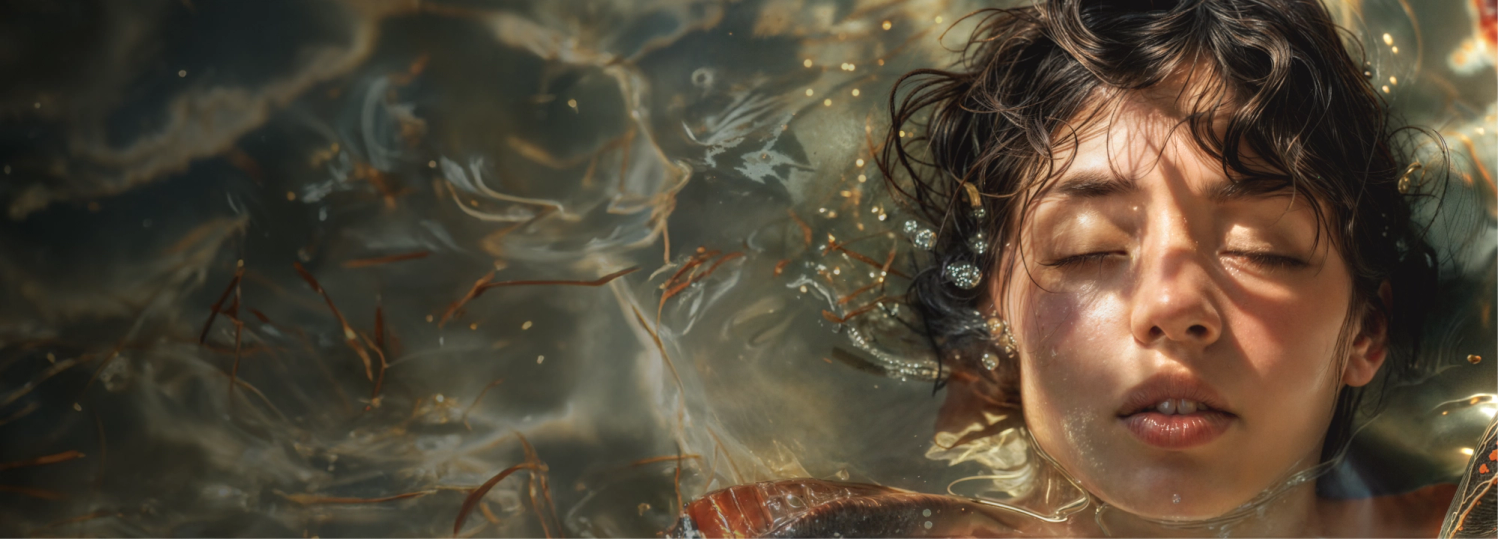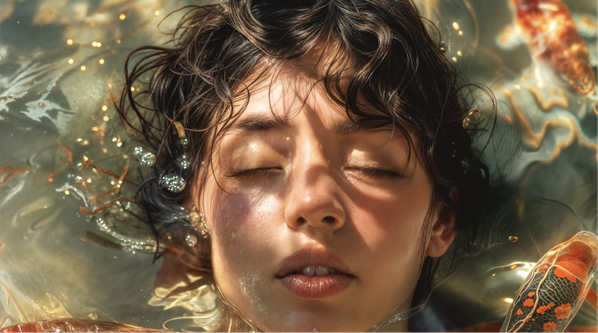The Future of Artificial Intelligence (AI) in Design


AI isn’t coming for your job… but it is coming to take your job to the next level. Dig into our predictions for the future of AI in design, starting with a look at the current state of the industry, the benefits of this technology for creatives and what it all means for the teams of tomorrow.
There’s a sunk-cost fallacy for designers when it comes to AI.
The sunk cost: Decades spent refining their skills.
The fallacy: That using AI makes those skills any less essential.
The truth is, AI doesn’t have a designer’s eye. It may have access to a repository of AAA creative work, but it lacks real hands-on experience. It can’t tell if something looks good. It’s quintessentially a “yes” person. (Ahem, robot.)
If anything, AI makes real designers even more essential. But it also has the potential to make them five times more powerful. In the right hands—experienced, creative, discerning hands—AI in design can enable unprecedented speed, scale and success.
The question is, who will seize the opportunity first? All signs point to the marketing industry leading the pack.
The State of AI in the Design Industry
Have you ever heard of SuperPaint? What about PageMaker circa 1985?
These programs were among the first graphic design tools to hit the market. At the time, designers worldwide were divided. Some believed using computers would remove the human touch and lead to lower quality designs. Others sped ahead, gaining a competitive advantage and accelerating growth.
Now, designers are at a similar crossroads. Generative AI is already transforming the design industry, with marketing and advertising boasting the highest adoption rate of any sector.
Though hard to quantify the impact AI will have, one study by MIT shows businesses can increase productivity by 50% with this technology. Comparing these gains to past technological breakthroughs, like the advent of the internet and electricity, Nvidia drives home just how significant AI has the potential to be.
But do these productivity gains translate to design? It’s early days, but in the first two months of our own pilot program for AI-Enhanced Creative Services at Superside, we saved up to 1,015 hours of design time on projects, which translates to a 36% increase in efficiency and approximately $81,200 worth of design hours for our customers.
Here are a few examples of how we’ve applied AI in design:
- To produce a variety of images for X (Twitter) Space banner templates. By using Midjourney and Figma, the team generated 3300 unique images, saved 37.5% on design time and $1-1.3K worth of design hours for Ava Labs.
- To develop illustrated stickers and virtual meeting backgrounds. Leveraging Midjourney and Photoshop, the team generated 756 illustrations, saved 90% on design time and $15-20K worth of design hours for Independence Pet Group (IPG).
- To create animated scenes for an interactive game. Again, the team used the power duo of Midjourney and Photoshop to produce 676 images in an illustrated style, saving 85% on design time and $9-11K worth of design hours for National Gas Metering.
- To generate eye-catching graphics for a social media campaign. For this project, the team used ChatGPT, Midjourney, Photoshop and Vectorizer AI to develop 21 images that captured key themes while staying on brand for Amsive.
For this last project, we didn’t save on time or costs. That’s because tailoring the images to Amsive’s specific brand aesthetics and guidelines was a more time-consuming endeavor. Nonetheless, we did add value by providing a wealth of unique options to the client.
It goes to show, there are benefits to AI beyond increasing productivity. Let’s take a closer look at some of the ways AI in design can give your business an advantage.
What Are the Benefits of AI in Design?
At its core, AI is a force multiplier.
Combined with a human mind, that raw potential can result in masterpieces. The key is for a creative to guide the way. That’s why I say, AI isn’t coming for your job—it’s coming to take your job to the next level. But I’m getting ahead of myself…
How can AI help? Here are just a few of the benefits of embracing this technology in design:
How Can You Use AI in Design?
The benefits of AI abound—and so do its uses.
As we’ve seen, this technology’s superpower is scale. By generating images, illustrations and design elements en masse, designers can increase their output without a linear increase in time and effort. Of course, there are also time-saving AI power features, like generative fill and automatic color correction.
But the true power of AI is X-to-X generation.
The classic example here is ChatGPT, a text-to-text AI system. For designers, the next most common use case is text-to-image. There are several tools that fulfill this purpose—our favorites include Midjourney, Runway, Adobe Firefly and Photoshop.
Then there’s image-to-vector tools, like Vectorizer AI. Though the output isn’t currently perfect, this type of tool is still a big time-saver in the AI-enhanced design process.
According to The Board of Innovation, this is just the beginning of creative AI’s potential. In the future, we might enter an era only imagined in sci-fi novels where we can go from thought to design. (No really, companies like Neurolink are working on implantable tech that will allow humans to interact with computers through their thoughts.)
I’ll be the first to admit, these advances are both terrifying and exhilarating. But realistically, what does it all mean for the future of design?
What AI Means for the Future of Design
I’ll die on this hill: AI will not replace designers.
There’s no question, it will enhance the design process. But there will always be a need for creative minds to guide the way. Which is why I believe the future of design lies in creative AI teams; designers who leverage AI tools, guide creative concepts and refine generated visuals to meet brand standards and communication needs.
Just like the designers of the 1980s learned how to collaborate with computers, today’s creatives will adapt to having an AI co-pilot. And together, designers and AI will unlock a new era of scalable, high-performing creative.
What might this partnership look like?
Humans and AI Are Better Together
From IKEA’s robot-generated retro furniture to Beck’s Autonomous’ marketing campaign, humans and AI are already combining forces to push the boundaries of creativity at scale.
So, though there are some valid concerns about AI’s potential impact on the creative industry, 60% of designers aren’t worried. At least, the ones who remember when Apple killed Flash and sagely advise that tech and tools will come and go but “creativity is uniquely human.”
At Superside, we’re of a similar mind. Our superpower has always been our people—the top creative talent from around the world. And now, by combining that talent with the world’s most powerful AI tools, we’re creating exponential value for our customers.
Our motto: Human-powered creativity, AI-powered scale.
You may also like these

The Creative Struggle for Meaning in the Age of AI Adoption
Imagine being a painter in the 1840s, with people traveling for weeks to be immortalized by your delicate brushwork. As you finish your latest masterpiece, adding final details, a commotion catches your attention.Outside, people marvel at a new invention—a sturdy black box that captures reality in minutes, with more detail than any painting could achieve. You feel a shiver down your spine. If just pressing a button can do what you can, what are you here for?AI adoption has come to disrupt not only every industry, from medicine to finance to marketing, but also our daily lives. Large Language Models (LLMs) began as thought partners, capable of generating text in any language, tone or style, offering fresh ideas, planning support or even challenging your thinking. Then, other types of Gen AI like image generation, voice, music and video enhancement and other tools, emerged. What used to take long hours or days (maybe months) and specific skills, is now achievable by knowing how to prompt effectively and trial and error.Our AI Consulting Team surveyed over 800 creatives from 80 different companies and more than 10 countries. We listened to their thoughts and concerns on this new wave. By now, we have a much clearer understanding of how they think and feel about their work, and the changes AI is introducing into their workflows and their lives. Here are some of the results.
Beyond the Brief: All the Buzz About AI-Powered Ads
Global agricultural technology leader, Syngenta uses science to advance crop production. However, even the most cutting-edge innovations must work in harmony with nature. Attracting pollinators, like bees and butterflies, Operation Pollinator helps boost crop yields.But what does this have to do with using AI for ad creative? When guided by human ingenuity and expertise, AI is a catalyst that lets you quickly explore and refine ideas.Learn how partnering with Superside helped Sygenta speed concepting and nurture the storytelling of these groundbreaking ads.The Brief: Promoting Operation Pollinator To kick off the project, Syngenta shared an existing Operation Pollinator explainer video. There were no static images for this initiative, which meant the creative team was starting from scratch. Vidrio and Montelongo had a blank slate, a lot of freedom and only two days to complete the entire project.
Responsible AI: What Enterprise Brands Need To Know
Responsible AI isn’t just about what is legally allowed, it also speaks to the core of your brand identity, leading you to ask: What’s important to you as a brand? What are the things that make your brand truly unique?To empower you to take fundamental actions to ensure an effective approach to AI adoption that aligns with your brand’s core values, I'll take you through a high-level overview of why responsible AI is important, explain how to make crucial decisions and share examples from brands that have tackled these same questions.For many of our enterprise customers, the impact of using generative AI to produce marketing and advertising creative extends far beyond productivity gains—it helps your brand to stand out in a crowded marketplace, lets you iterate faster than your competitors and achieve your business targets.Whether you're an established leader or steadfast category disrupter, the way you roll out any initiative defines you. AI integration is no different, which is where the concept of practicing responsible AI comes in.Practicing Responsible AI: Purposeful Actions for Enterprise Brands


